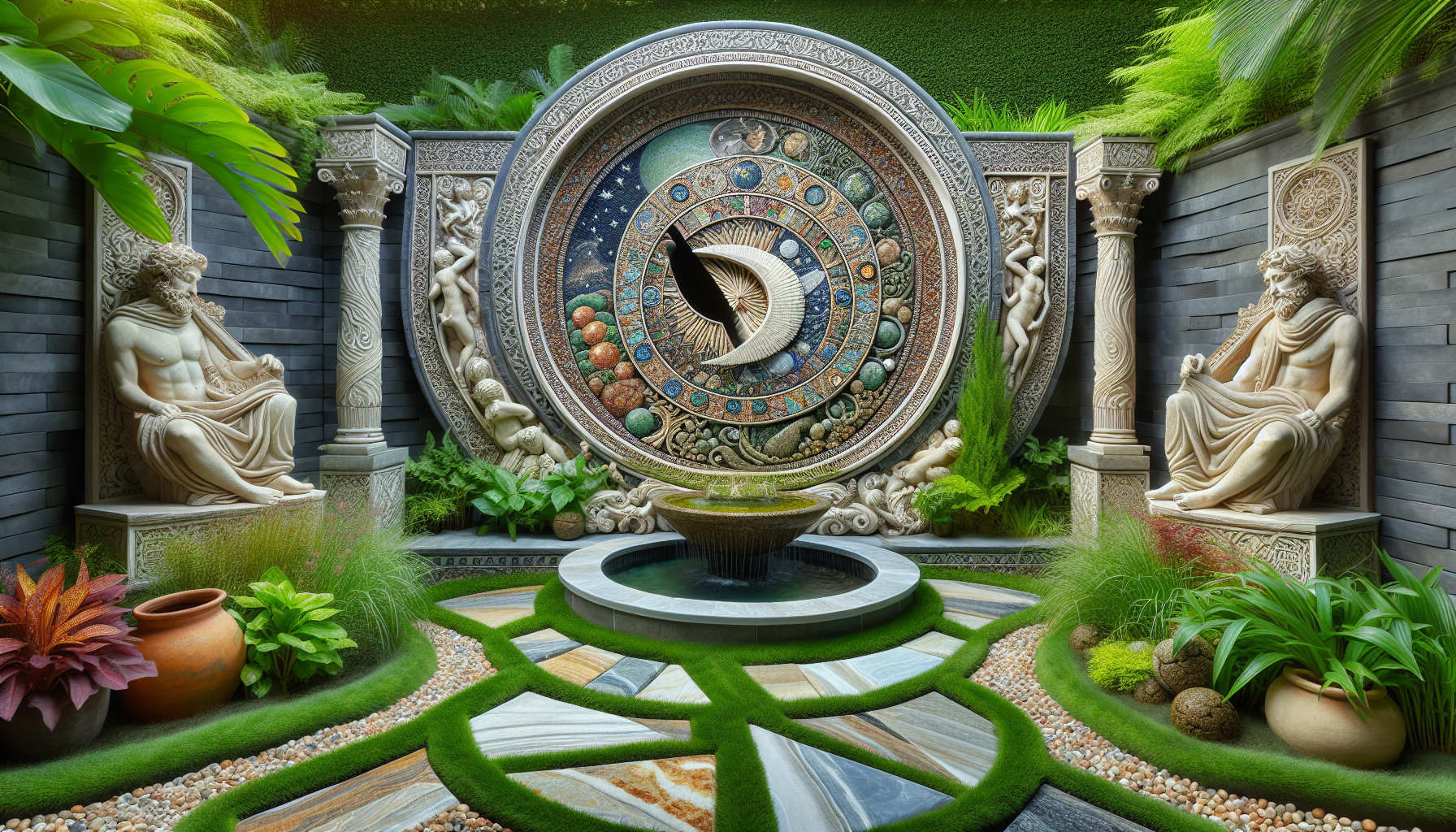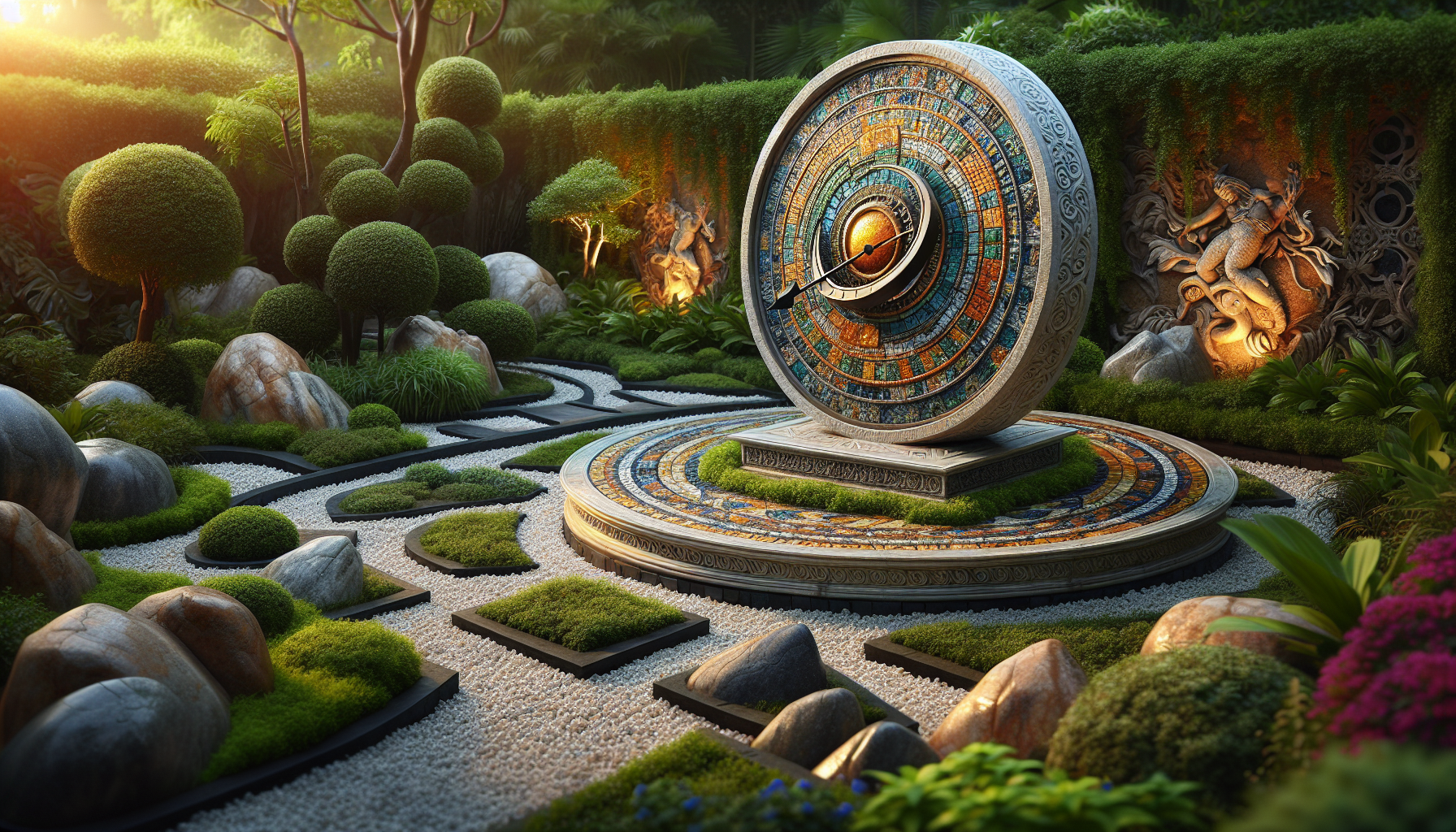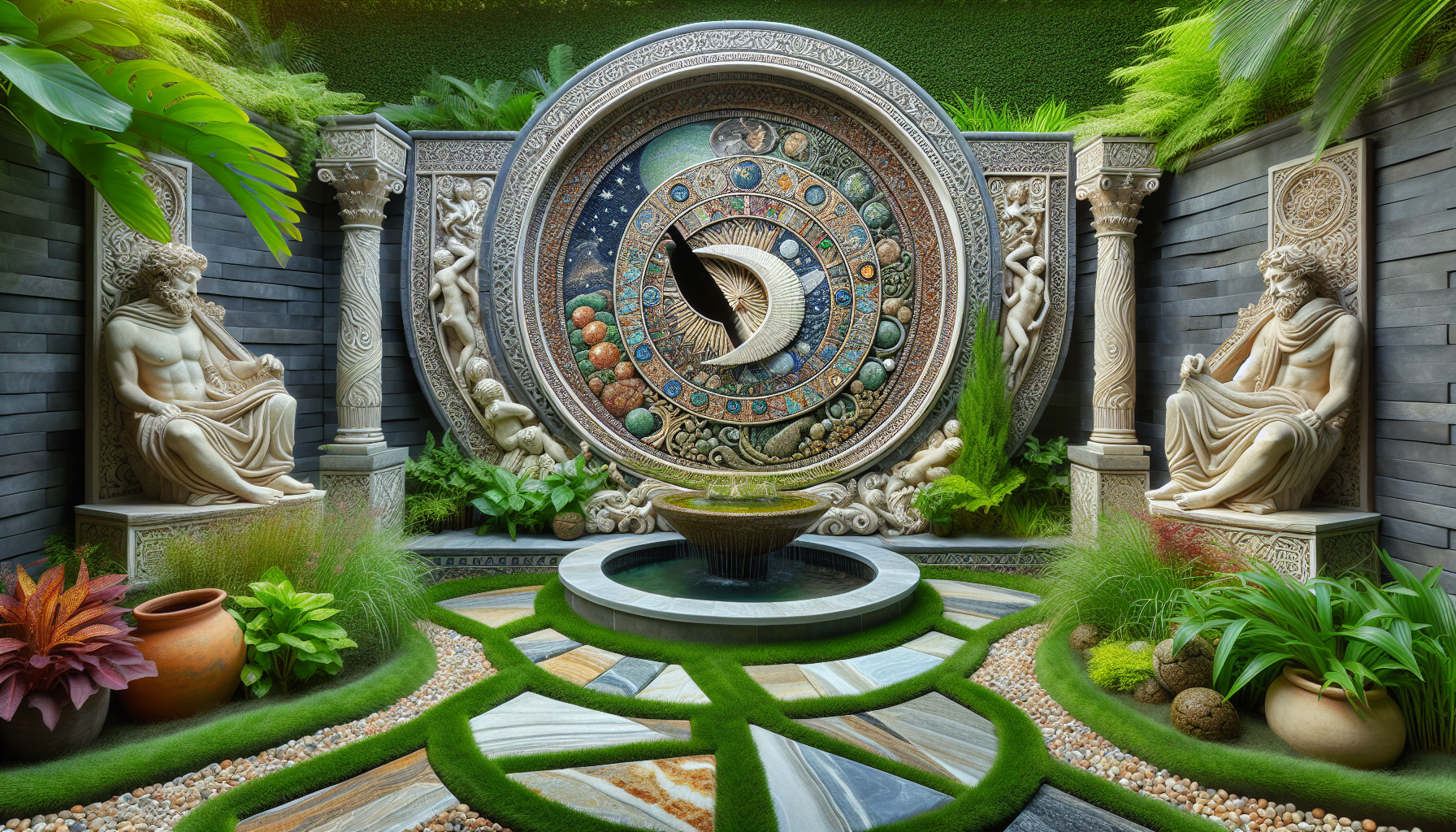What’s your vision for your garden? Are you looking to add some personal flair to your outdoor space in Mesa? If so, hardscaping could be the perfect solution for you. But before we dive into how to effectively use hardscaping for garden art placement, let’s take a moment to get to know Mesa a little better.
Discover Mesa, Arizona
Mesa is a vibrant city nestled in the eastern part of the Phoenix metropolitan area. Known for its stunning desert landscapes, Mesa boasts a rich cultural scene, outdoor recreational activities, and a warm climate that draws residents and visitors alike. The city is home to a variety of parks, golf courses, and community events that reflect the spirit of its residents.
As the third-largest city in Arizona, Mesa is packed with opportunities for friendly interactions and community gatherings, often centered around outdoor experiences. This setting provides a fantastic backdrop for anyone looking to create a beautiful garden space, seamlessly blending nature and art. Given its sunny weather, residents often enhance their outdoor areas with features that complement their lifestyle, making hardscaping a sought-after element in landscape design.
The art of hardscaping involves incorporating hard materials such as stone, concrete, or wood to create pathways, patios, walls, and other structures. This solid foundation allows you to showcase garden art uniquely and attractively. With the right approach, hardscaping becomes more than a practical feature; it transforms your garden into a gallery that reflects your personality and style.
What is Hardscaping?
Hardscaping refers to the non-plant elements in landscape design. This includes walkways, patios, retaining walls, and decorative features made from materials such as stone, brick, or concrete. Unlike softscaping, which involves plants and greenery, hardscaping provides structure and form to your outdoor spaces.
Utilizing hardscaping elements can enhance the functionality and aesthetic appeal of your garden. By using different materials, you can create areas for relaxation, socializing, or displaying art. Whether you want a simple path leading to a cozy seating area or an intricate stone wall displaying beautiful sculptures, hardscaping offers endless possibilities.

Benefits of Hardscaping in Your Garden
Incorporating hardscaping into your garden has many advantages. Here are just a few key benefits to consider:
1. Aesthetic Appeal
Hardscaping can add beauty and character to your outdoor space. From elegant pathways to beautiful patios, hardscaped elements can complement your garden art and plants, creating a cohesive look.
2. Functionality
Hardscaping provides practical solutions. It creates defined spaces for entertainment, relaxation, and navigating your garden. Features like paths and patios make it easier to enjoy your outdoor area.
3. Low Maintenance
Hardscaped areas require less upkeep compared to softscaped areas filled with plants. You won’t need to worry about regular watering, mowing, or weeding, allowing you more time to enjoy your garden.
4. Increased Property Value
A well-designed hardscape can increase your property’s value. Prospective buyers generally appreciate organized outdoor spaces, which can make your home more appealing.
Choosing the Right Hardscaping Materials
When it comes to hardscaping, the materials you choose play a significant role in your garden’s overall look. Here are some common materials to consider:
Natural Stone
Natural stones such as flagstone or slate bring a rustic and timeless appeal. They can be used for paths, patios, and decorative walls. Their unique colors and textures add visual interest.
Concrete
Concrete is durable, versatile, and can be poured or molded into various shapes. It serves as a fantastic option for patios or walkways, providing an array of design possibilities.
Brick
Brick offers a classic look that can complement various architectural styles. It’s perfect for paths, patios, and borders, providing stability and charm to any garden.
Gravel
Gravel is an economical choice that can create a casual but attractive look. It works well in paths or as a base for garden art installations.
Each material comes with its unique characteristics and advantages. Consider the style of your home and the overall feel you want to create when selecting materials.

Planning Your Hardscaping Design
Once you have a grasp of hardscaping materials, the next step is planning your design. Here’s how to approach it:
Assess Your Space
Begin by evaluating your garden’s layout and size. Take note of areas that might benefit from hardscaping, such as pathways that lead to specific features or gathering spots for art displays.
Define Your Goals
What do you wish to achieve through hardscaping? Is it functionality, aesthetics, or both? Clarifying your goals can help guide your design choices.
Sketch Your Design
Create a rough sketch of your proposed layout. Indicate where you plan to place paths, patios, and art installations. This visual representation can help you organize your thoughts and see how different elements fit together.
Consider Lighting
Incorporating lighting into your hardscaping design can enhance the beauty of your garden art. Think about how you want to illuminate your space, especially if you plan to enjoy your garden in the evenings.
Integrating Garden Art with Hardscaping
Now that you have a solid foundation for your hardscaping design, it’s time to think about how to incorporate garden art effectively. Here are a few strategies to consider:
1. Positioning
The placement of your garden art is crucial. Think about visibility and accessibility. You might want to highlight a stunning sculpture by placing it at the end of a pathway or make it a focal point near a sitting area.
2. Material Harmony
Ensure the materials of your garden art complement your hardscaping. A stone statue may look stunning against a flagstone path, while a metal piece may shine against a concrete backdrop.
3. Scale and Size
When selecting garden art, consider the scale of your hardscaping elements. Larger pieces may overpower tiny patios or pathways, while smaller items may get lost if your hardscaping is expansive.
4. Thematic Consistency
Maintaining a theme throughout your garden can create a cohesive look. If your hardscaping exudes a modern vibe, consider contemporary art pieces; if it’s more rustic, try incorporating organic shapes.
Types of Garden Art to Consider
With hardscaping setting the stage, here are several types of garden art that you might want to include in your design:
Sculptures
These are standout pieces that can add depth and intrigue to your garden. Whether you prefer classical sculptures or modern abstraction, they make compelling focal points.
Pottery and Planters
Creative pots and planters can serve dual purposes as art and a home for your plants. Opt for vibrant colors or unique shapes that stand out against your hardscaping.
Wall Art
If your hardscaping includes walls, consider using them to display art. Wall hangings or murals can add personal touches while enhancing your hardscaped area.
Water Features
Water features such as fountains or ponds can be artistic elements that also create serene ambient sounds. Integrating a water element with your hardscape can elevate the overall experience.
Decorative Stones or Pathway Art
Sometimes, the small details matter most. Painted stones or artistic pavers can add personality while contributing to the overall beauty of your garden.
Maintenance Tips for Hardscaping and Art
To keep your hardscaping and garden art looking their best, a little maintenance goes a long way. Here are some tips:
Regular Cleaning
Keep surfaces clean by sweeping paths and patios regularly. A pressure washer can help remove stubborn dirt or stains on stone and concrete surfaces.
Inspect for Damage
Periodically check your hardscape for cracks or wear and tear. Addressing small issues now can prevent larger problems down the line.
Protect Your Art
Different materials will require various forms of care. Ensure your garden art is weather-resistant and maintained according to its specific needs. For instance, metallic pieces should be treated to prevent rust.
Seasonal Touch-Ups
Consider seasonal adjustments to your garden art and hardscape. You can rotate different art pieces or add seasonal flowers to planters to keep your garden fresh and inviting year-round.
Collaborating with Hardscaping Professionals
If you find yourself unconfident about tackling hardscaping projects, collaborating with professionals may be the perfect answer. Working with experts can simplify the process and ensure you achieve your desired outcome.
Consultation
Start with a consultation to discuss your vision. Professionals can provide valuable insights on design, material selection, and the effective incorporation of art.
Design and Installation
Experts can help with every phase, from design to installation. They have the necessary skills and knowledge to ensure that your hardscaping is not just beautiful but also structurally sound.
Recommendations
For a reliable and skilled option, consider Xclusive Home Services for all your hardscaping needs. Their team is dedicated to providing top-quality service tailored to your specific requirements.
Xclusive Home Services
14505 N. Hayden Rd., Ste. 101
Scottsdale, AZ 85260
Phone: (602) 341-5545
Email: management@xclusivehomeservicesco.com
Benefits of Working with Professionals
-
Expertise: Professionals bring experience and knowledge, ensuring that your project meets local codes and regulations.
-
Time-Saving: With experts handling the details, you can focus on enjoying your garden rather than getting bogged down in planning and execution.
-
High-Quality Results: A professionally installed hardscape not only looks great but also lasts longer, giving you peace of mind.
Conclusion
Transforming your garden into a stunning space in Mesa is entirely achievable through effective hardscaping and art placement. With careful planning, the right materials, and perhaps the assistance of professionals, you can create an outdoor area that reflects your personality while providing a serene retreat.
Remember to prioritize both functionality and aesthetics, ensuring your hardscaping complements your garden art beautifully. With a bit of creativity and effort, your outdoor space can become a true extension of your home, making it a place you can enjoy for years to come. May your garden journey be filled with joy and creativity!

